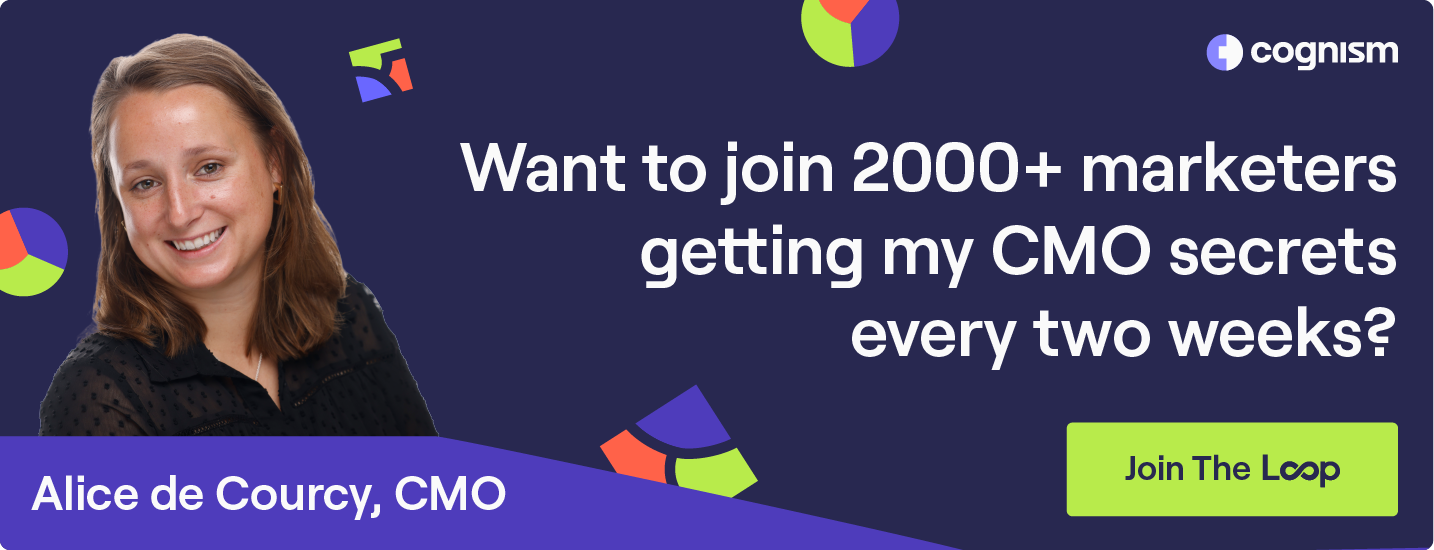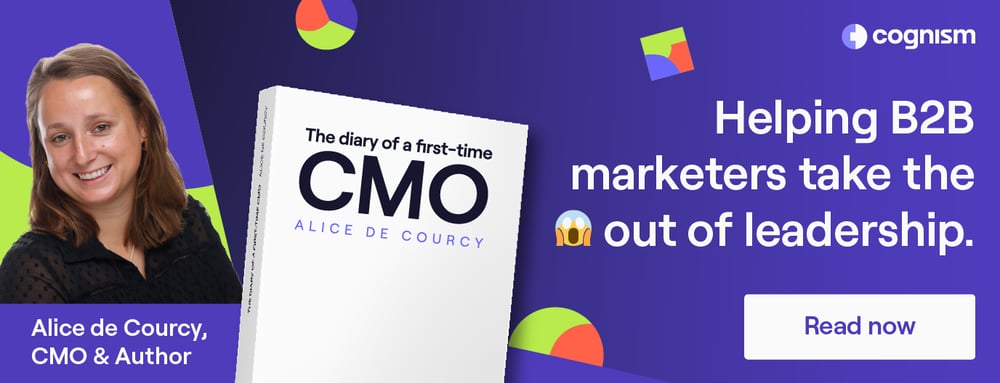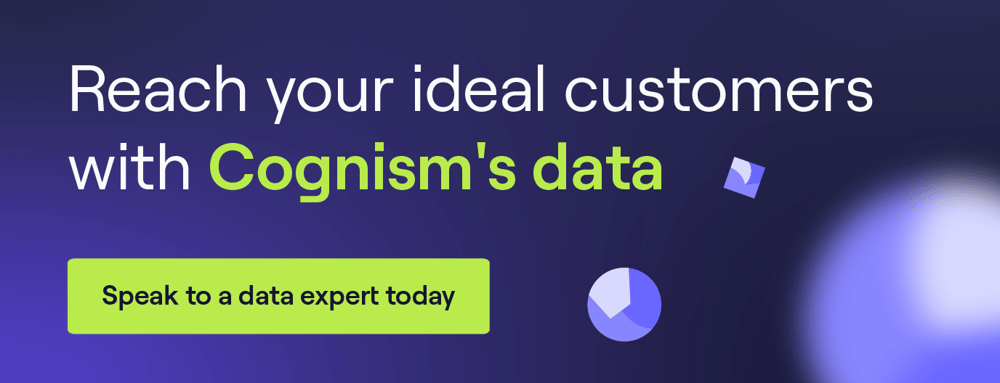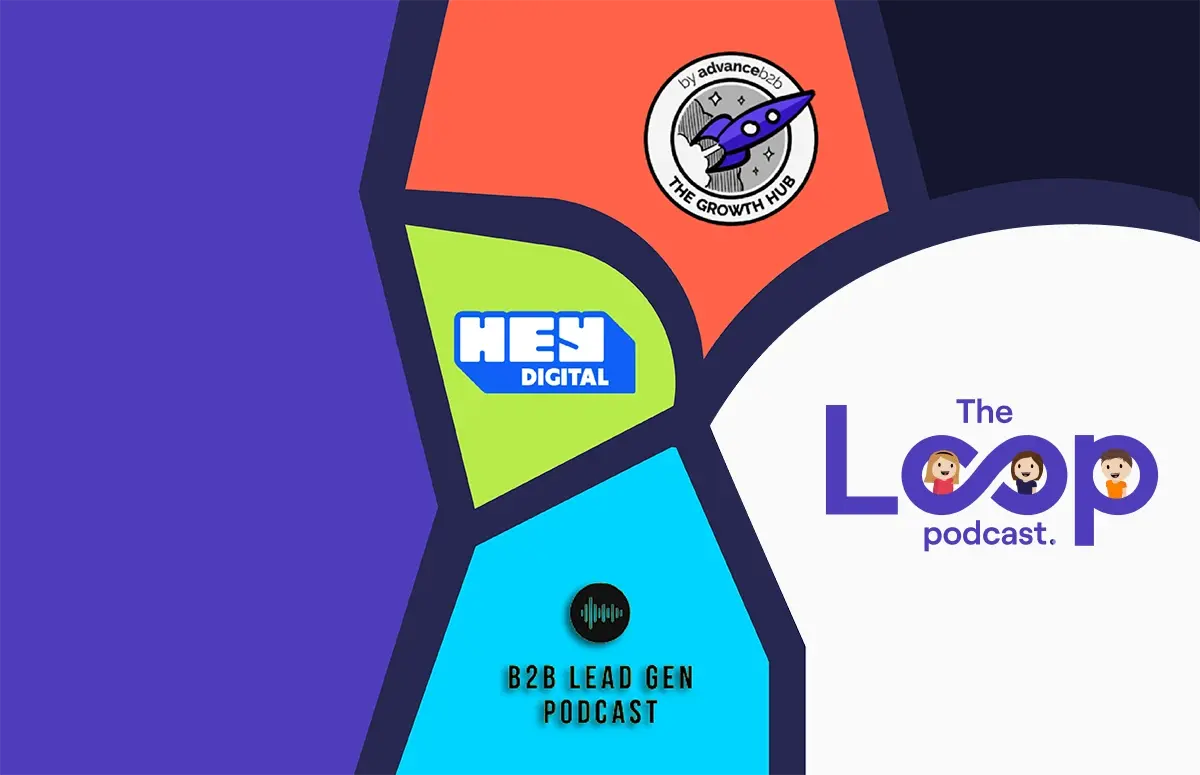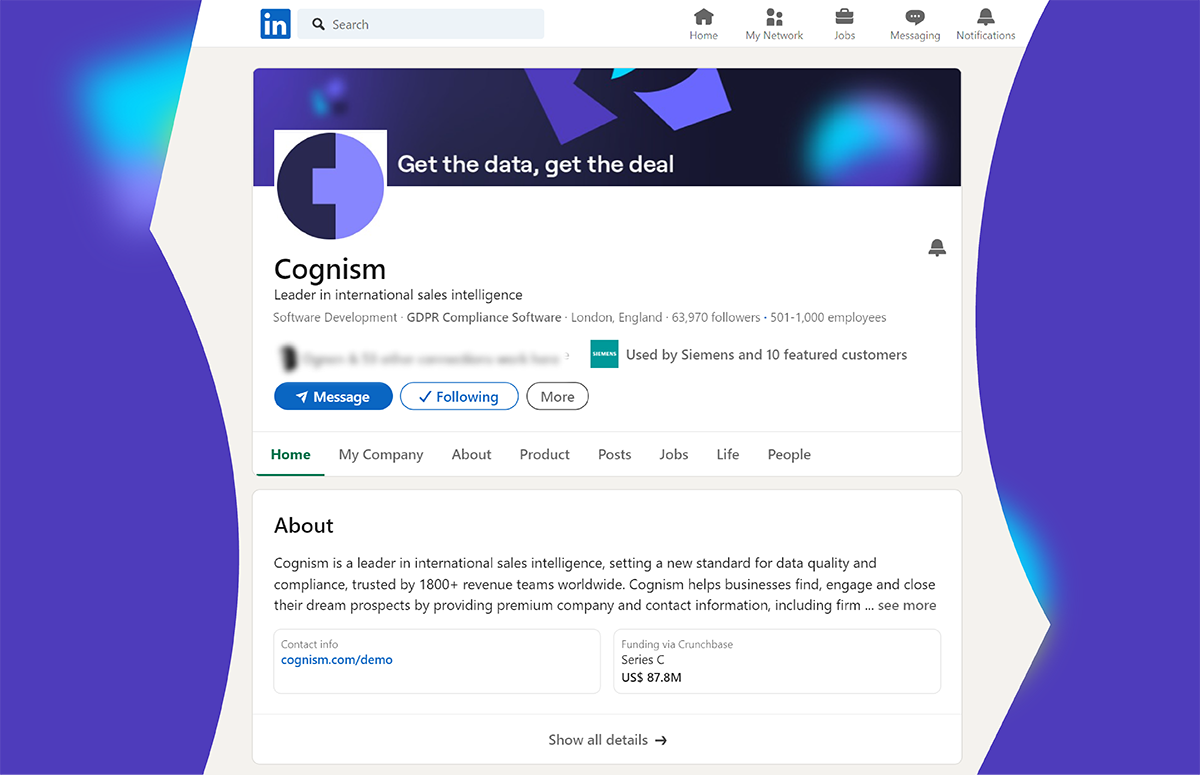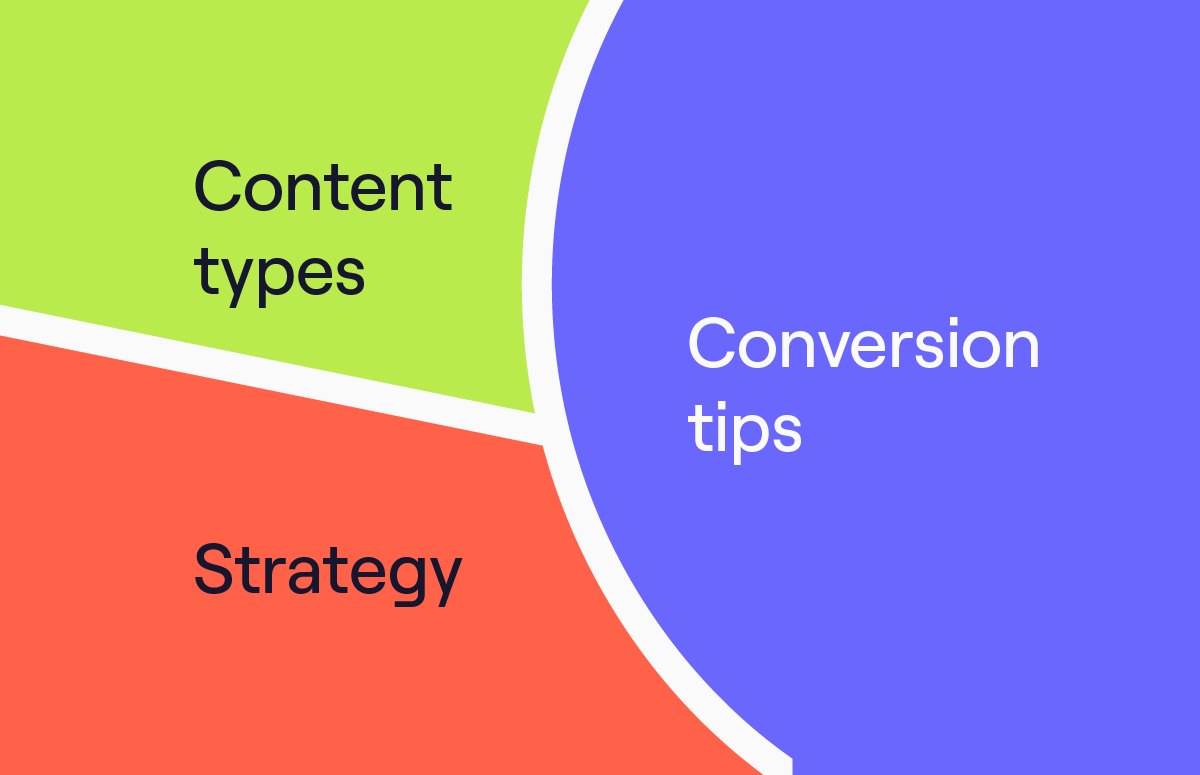Content Marketing for Lead Generation: How to Convert Leads in 2025
Lead generation marketing is changing.
Scratch that. It’s already changed.
The question is: are you ready to boldly go where you haven’t gone before? Without opening the can of worms that a sci-fi reference can spring, let’s start breaking down how content is your new secret weapon.
Content marketing for lead generation used to focus on getting customers to convert. Today, it’s about creating high-value content for customer loyalty and quality leads.
This article explores the fundamentals of using content to generate marketing leads and the different kinds of content you can use to achieve your goals.
Keep reading 👇
What is content marketing for lead generation?
Content marketing lead generation is a strategic marketing approach that involves creating and distributing relevant and engaging content to attract and generate leads from a specific target audience.
It’s an important lead generation tactic because it allows you to create relevant and engaging content and provides target audiences with valuable information about your products or services.
Content marketing can drive organic traffic, build relationships, increase brand awareness, and ultimately bring in more qualified leads.
In the past, B2B marketing’s main goal was getting prospective customers to buy into the value a business promised to deliver.
But tactics have changed, and businesses are finding better results by providing value before a product or service comes into the equation. Value in the form of relevant and insightful content that helps prospective customers overcome their challenges in your area of expertise.
So, what are the secret battle plans for content marketing?
And how do you go about making compelling content that builds trust and creates demand?
Let’s explore 👇
How do you create content that generates leads?
Generating leads in marketing involves creating and distributing content that will attract your target audience and turn them into prospective customers.
Content should be informative, engaging, and tailored to the needs of your target customer to ensure that it resonates with them.
When creating content for lead generation, you must:
1. Set goals
The hard part’s over once you’ve decided to continue with content marketing as your North Star for lead generation.
The next step is to set clear, tangible, measurable goals. And don’t fret if they look different to what you’ve measured success against in the past. The most important thing is that you have them in place and capture as much marketing data as possible from your activities.
When it comes to content marketing for lead generation, setting SMART goals is essential. SMART stands for Specific, Measurable, Attainable, Relevant, and Time-bound.
By setting SMART goals before beginning a content marketing campaign, businesses can ensure that their efforts are organised and targeted towards achieving measurable results.
2. Research your audience
Your customers aren’t alien species, although why they take certain actions may seem otherworldly at times. In the data age, you have more tools and insights than ever before to help you get to know them better.
You can do a deep dive with market research, customer surveys, and social listening to identify your target audience’s pain points, interests, and needs. With this knowledge, you can start crafting contextual content that answers their questions and puts you on their galactic radar.
Using keywords is a great way to direct your target audience to specific content and increase website traffic. You can also optimise your content for search engine crawlers with the right keywords. This helps ensure that your content is visible when users search for related topics and increases their chances of discovering your business.
Anna Crowe, an SEO consultant who worked at Leadfeeder in 2021, said:
“We use different keyword groups based on our site architecture. We use our keyword-rich main navigation to create our strategic keyword strategy for the rest of the content on our site. We choose keyword groups that target purchase intent.”
“For example, instead of ‘lead generation software’, we use ‘buy lead generation software’ for our product pages. But, for our blog pages, our buyer personas may not be ready to buy yet; the intent is not to purchase but to learn more. We use different keyword groups based on where they are in the buyer journey.”
But how do these keyword groups cater to leads at different marketing funnel stages?
She said:
“Map each keyword group to each customer journey phase in your content map. We use informational keyword groups at the beginning of the funnel during the awareness phase. Then we use transactional keyword terms like ‘company name pricing’ when the intent is to buy.”
3. Choose marketing channels
The inner space of the digital landscape is vast, so you must choose the proper marketing channels to reach your audience effectively.
Whether leveraging the power of social media, optimising blogs and landing pages for search engines or engaging with industry influencers, select the channels that align with your audience’s preferences.
Will your content thrive on LinkedIn, YouTube, or TikTok?
Where is your audience most active?
Remember, quality over quantity, so focus on a few big-impact content pieces to distribute across social media channels.
4. Create compelling content
Whatever your subject or industry, make sure your content tells a story. The power of storytelling can’t be emphasised enough; it makes a big difference in how much engagement your content gets.
If possible, lean towards video, especially short-format video. But even if it’s just a blog post, add some humour and make it entertaining.
Be mindful that the entertainment element helps to highlight your key messages and not overshadow them. It’s not about showcasing your products or services; it’s about addressing your audience’s pain points and providing helpful information. Your content must be worth your potential customers’ time.
5. A/B test
Even the best content marketers aren’t mind readers. That’s where A/B testing comes into play. It’s your secret weapon to get the most from your content marketing for lead generation.
You can uncover what resonates best with your audience by experimenting with different content variations.
Experiment with different headlines, calls to action, visuals, and content formats, then analyse the results and make improvements. Each iteration will provide more significant insights and engagement.
6. Check intent and optimise for conversions
Among the vast asteroid field of the digital landscape, you’ve attached your tractor beam (or is it attractor beam 🤔) to your audience’s attention.
Great!
Now imagine, after crafting the perfect messaging and engaging content, your visitors follow the trail to a landing page that doesn’t align with their marketing intent. And poof, just like that, you’ve lost them. So, if you direct them to a landing page, ensure your forms and CTAs are optimised to guide them smoothly to take the desired action.
Here’s how Growth Advisor Gaetano Nino DiNardi recommends optimising CTAs:
Sales and marketing should evaluate every conversion point and ask:
1. Does the CTA corresponding to the content make sense? Does it reflect a realistic next step a prospect would want to take?
2. After conversion, what does the buyer expect to happen next? Are we currently directing them somewhere else?
3. After conversion, who do they expect to hear from? How long should it take?
4. Does our CTA button language accurately reflect what will happen next?
5. What type of additional qualification or discovery is needed?
6. Reality check:
- Are we treating the buyer according to their expectations?
- Are we incorrectly classifying assumed intent sources for declared intent?
- Is sales wasting time talking to large volumes of unqualified people?
- Is sales connecting with too many people who just want a quick hit answer that could have been answered on live chat?
- Is sales connecting with too many people who just want a quick hit answer regarding a feature or integration -- which could be fixed with better website content?
If these symptoms are present, you can update your processes to better reflect how buyers like to buy.
Stay in the loop and sign up for our newsletter for more insights on how to use content marketing to grow your business👇
7. Distribute content
Your content is ready to be released into the world and hopefully consumed by as many of your prospects as possible.
Creating pieces of content for lead marketing requires some effort and thought. You want something attention-grabbing and engaging for your target audience.
This requires a balancing act. You want to use the proper channels for your audience and hit them at the right times and places.
Additionally, you need to consider the content type that will best accomplish your goals. Will it be an infographic, a blog post, a video, or something else? Use a mix of organic and paid distribution channels, including social media platforms and email campaigns.
You can also amplify your reach by partnering with industry influencers who can share your content with their followers. However, ensure that whoever you partner with is relevant to your industry and strives to keep authenticity around your brand by sharing their personal experience with your products or services.
What type of content is best when marketing for leads?
Now that we’ve covered the fundamentals, let’s look at the diverse content types that work wonders for marketing lead generation.
1. Guides and white papers
Establish yourself as an industry thought leader by creating comprehensive guides and white papers - then ungate them. Think of them like educational treasure troves that answer your audience’s pain points.
In the past, gated content was an integral part of lead generation marketing strategies. Today, it’s better to offer knowledge for free. You’ll get more content marketing leads that way.
Cognism CMO, Alice de Courcy, explains why demand generation content is the future in this video:
Use the research you’ve done in the fundamental steps above to identify what your content leads are looking for.
By saving your audience a lot of research and helping them to become more enlightened, they’ll see you as a “go-to” resource for valuable insights.
What are you building here? Trust - the foundation of all great relationships.
Learn more Alice de Courcy's predictions about the future of enterprise content marketing.
2. Webinars
Think of webinar lead generation as an interactive video version of your white papers. A virtual classroom, if you will, where your marketing leads can connect with you to learn, engage, and ask questions in real-time.
It’s an excellent way to showcase your skills and bring your brand personality to life. Again, the more informative and engaging you can make your webinars, the more your figurative stocks will increase.
Make it friendly, find a host that embodies your brand personality, and include a subject matter expert that can answer questions on the fly. If you have your own “Yoda” who does both of those things, amazing!
3. Videos
In a world where attention spans are becoming shorter and more difficult to grab, video content is the supreme intergalactic ruler.
From product demos to customer testimonials to explainer videos, embrace the power of visual storytelling to answer your audience’s pain points. It’s essential to strike the right balance between entertainment and information.
Also, don’t make your video content too long; think bite-size bits of video content. The goal is to capture the audience’s attention, treat them to a valuable idea or insight, and leave them wanting more.
4. Case studies
Remember the old saying, “The proof is in the pudding”? You gain trust and authority by showcasing a real-world example that acts as social proof that your product or service delivers on its promise.
Present your case studies in a visually appealing and easy-to-digest way. Structure them with a beginning, middle, and end. Think less “study” and more “story”. Think about the key takeaways you want the audience to have and emphasise them in the structure and design of your case study.
5. Blogs and landing pages
These dynamic content formats are not only great for capturing marketing leads, they’re also highly versatile.
Use blogs to their full potential by allowing them to perform multiple roles: educate and inform, help with SEO, be lead magnets, and encourage social sharing.
See, they’re like Swiss army lightsabers. As the blogs lead to your landing pages, it’s a good idea that they tightly align with the pathway the blog has created.
Ensure your brand tone comes through clearly in writing, and they continue to build your credibility as a provider of insights and value.
6. Checklists
Busy professionals love actionable content, and checklists are a great way to provide step-by-step guidance.
Create checklists that help your audience solve problems or achieve specific goals. It also does some of the heavy lifting for your potential customers.
It’s like a roadmap for what your customers need to accomplish their goals. It’s valuable because it guides actions and helps your leads tackle a problem, allowing you to take a step-by-step approach (which just so happens to incorporate your business offering).
7. Email campaigns
A well-crafted email campaign can nurture leads and guide them through your sales funnel.
However, there’s a catch. You can’t know for sure at what stage of the funnel the recipient is and if they’ve read any of your previous emails. So, working with a sequential email campaign that relies on your lead reading every single one you’ve sent them isn’t realistic.
At Cognism, we’ve changed our approach to email campaigns. Our CMO, Alice de Courcy, explained it well in her series “Diary of a First-time CMO”:
“Most people will miss most of the emails in the sequence, or only one email actually piques their interest that day to engage and click.”
“Therefore, every email should be a delivery mechanism for an always-on resource that can be consumed by the reader whenever it suits them. You want to give your audience the freedom to decide which content they consume.”
Marketing for leads isn’t easy, but if anyone knows the secrets to success, it’s Alice. Read her book online by clicking the banner below 👇
8. Newsletters
If you build it…they will come. Creating a loyal subscriber base takes content that delights your audience enough that they don’t mind it “cluttering” their inbox. So, it better be insightful, educational, and entertaining.
Use your newsletter to connect with your audience and showcase subjects they would find interesting.
We’re talking about industry news, product updates, and exclusive insights. If someone goes to the trouble of reading your email, it better be worth their while.
Hopefully, it’s so good they even mark it with a star. In that case, you get a gold star for marketing lead generation!
9. Podcasts
With the growing interest in audio content, podcasts have become popular for sharing industry insights and thought leadership.
You can interview industry experts, engage in meaningful conversations, and establish your brand’s authority with audio content that provides insight and inspiration.
Another great thing about podcasts is that people often listen to them outside of working hours, such as at the gym or while commuting, which makes them a captive audience.
10. Templates
Ready-to-use templates will make your audience’s lives easier, which means you build brand affinity and demonstrate your expertise.
Whether it’s a design template, a project management tool, a customisable spreadsheet, or a content calendar, templates provide immediate value to your marketing leads.
11. Free tools
“Hey look, it’s a bird! It’s a plane! No, it’s more valuable content!”.
There’s no doubt about it; free tools are super. By providing your audience with tools that help them with their day-to-day tasks, you position yourself as a helpful brand.
Free tools can be calculators, assessments, diagnostic tests, or anything that solves a small problem for your audience. They keep you top of mind when your prospects have a bigger problem that needs a solution.
Check out what B2B marketing tools and content marketing tools we recommend using.
12. Paid ads and social media posts
These are another set of content pieces that, when effectively targeted, can deliver excellent results for lead generation. Paid social media posts increase brand awareness by reaching a wider audience and exposing them to your key messaging.
Organic posts engage with your existing followers and should constantly offer them value. Whether it be linking to a new piece of content or giving them access to a value offering, it should validate why they started following you in the first place.
Paid and organic social media posts also benefit A/B testing new messaging, designs, and CTAs. Use the learnings from them to constantly optimise your content. There’s always room for improvement, and each iteration takes you one step closer to a lead that will land you more business.
What is the best way to gain leads from content marketing?
The shift in B2B marketing is pretty clear; lead generation is taking a back seat, and demand generation is forging the way.
As marketers, we must accept that gone are the days of generating marketing leads by bombarding audiences with countless forms, deals, and hooks. Modern audiences are seeking substance and value in the content they consume.
Make your content the thing that helps your ideal audience fulfil their needs, aspirations, and desires. It’s about establishing a genuine connection, empowering and educating them, so they can’t help but want to remain in your brand’s orbit.
This shift marks a new era in content marketing (an exciting one at that) where value-led content drives demand and creates long-lasting relationships. The kind that comes with amazing content leads attached.
It’s time to cast aside the old ways and embrace the power of the content side!
Get quality content marketing leads with Cognism
Content marketing for lead generation is easy when you can access the best marketing data for lead generation.
Book a demo with Cognism and start landing opportunities with target accounts and the prospects your sales team really wants. Click the banner to get started 👇
